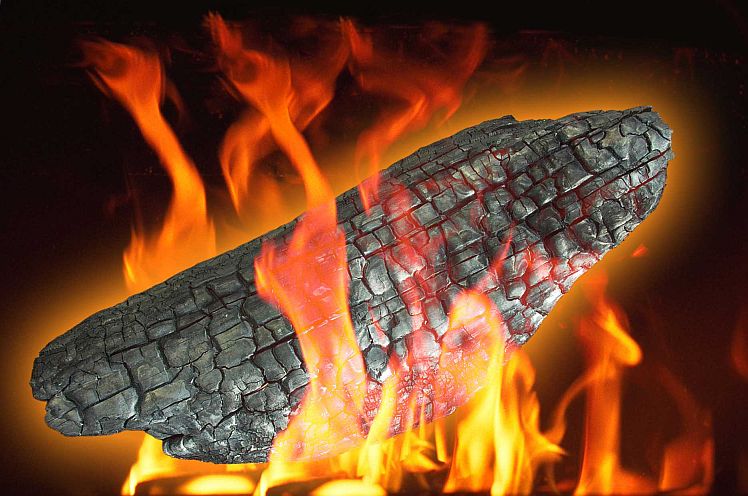Empa develops a particle separator for small wood-burning fires
Combating unhealthy smoke from the fireplace

| Heating
houses with a cosy wood fire is both economic and a sustainable use
of resources. The locally produced raw material is replaced by
regrowth, is available in plenty and is CO2 neutral.
When wood is burned, only as much carbon dioxide is generated as
was extracted from the air by the tree during its lifetime. A wood
fire not only warms the sitting room and the cockles of one’s
heart, it also soothes one’s conscience! This year there were
about 600,000 small wood burning fires in Swiss households,
principally fireplaces and tiled heating stoves. The trend is
upwards, but it is easy to forget that the popular and exemplary
energy converter also has a «dirty» side. Wood smoke
contains soot particles which are only about 100 nanometres (or one
ten thousandth of a millimetre) in diameter and which penetrate
very deeply into the lungs when inhaled. High concentrations of
this so-called PM10 fine particulate causes bronchial and
circulatory illnesses in humans.
False assumptions The emission of fine particulate matter from various sources has been the subject of study at Empa for several years. In the perception of the general public, diesel motors have been the biggest culprits to date. But while they have been subject to concentration limits for a long time now, and even tighter controls are already in the pipeline, there are no such limits applied to emissions from fireplaces and other wood burning ovens. New data shows, however, that today in certain locations a major part of the fine particulate matter in the air is due not to diesel exhaust but to emissions from small wood burning fires. In residential areas and during the winter months this proportion is particularly high.
Electrically charged soot particles A technical solution has been developed at the Empa with support
from the Federal Office of Energy and Swiss Agency for the
Environment, Forests and Landscape (SAEFL). The particle scrubber
removes soot from the smoke using the principle of electrostatic
separation. A high voltage is applied to a thin wire placed in the
chimney, which charges the soot particles in the ascending smoke.
They are then attracted to the inner surface of the metal chimney
tube where they remain stuck, in much the same way that dust sticks
to a computer monitor screen. The use of this method enables about
two thirds of the soot to be removed from the smoke. |
||
|
For more technical information: Christian Bach, Combustion Engines Internal Laboratory, Tel. +41 44 823 41 37, Editor: Matthias Kündig, Logistics,
Controlling, Marketing Tel. + 41 44 823 43 96, |
||
